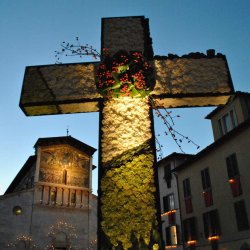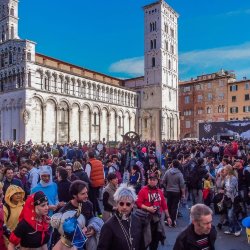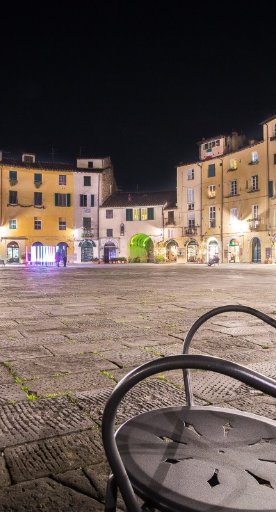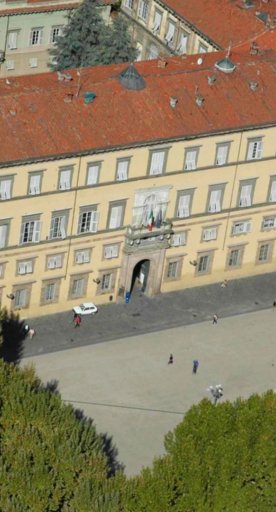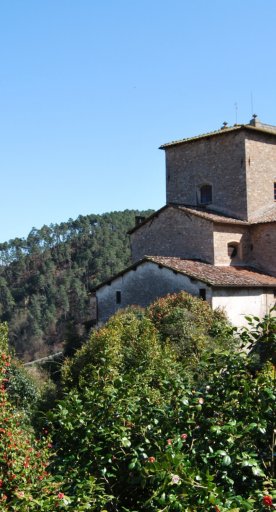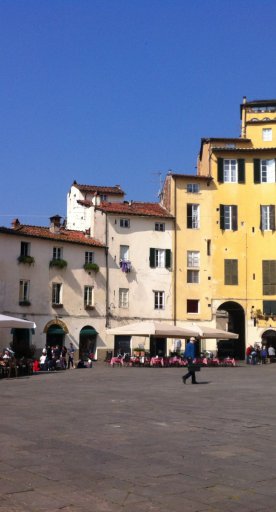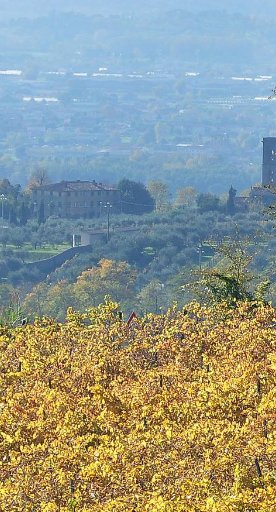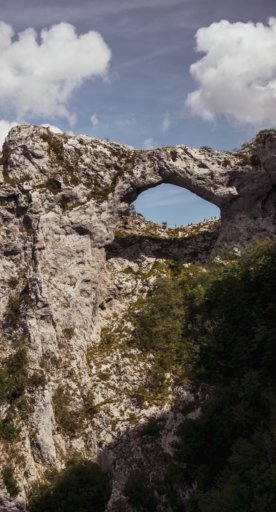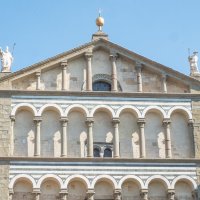Gardens, parks and protected areas: green spaces on the Tuscan Francigena
Along the Via Francigena you will encounter wonderful green spaces, both domestic and those left untouched
Along its 380km in Tuscany, the Via Francigena crosses a huge variety of landscapes and historical places, occasionally taking in lush nature and spaces where the hand of humankind has helped shape the landscape. While crossing one or more stages of this historic pilgrimage route, you come across magnificent gardens, untouched areas and places of so much value that they have become protected areas.
-
1.Geometry and symbolism in Renaissance gardens
-
2.Botanical gardens, home to centuries-old and exotic plants
-
3.Parks and reserves, unspoiled nature
Geometry and symbolism in Renaissance gardens

The air of novelty that the Renaissance brought with it also extended to the creation of parks and gardens. Urban spaces dominated by greenery were created from Versilia to the Val d'Orcia, with a thriving and friendly atmosphere.
These are the gardens of Palazzo Pfanner in Lucca, created in the early 18th century by Filippo Juvarra: plants, hedges, flowers, trees and even a bamboo grove characterize this Italian Baroque garden. The avenues that cross it converge towards the central fountain, a decorative element that brings out all the liveliness of the garden, from which you can admire the bell tower of the Basilica of San Frediano.
The Horti Leonini is more sombre and elegant, an urban space in San Quirico d’Orcia that was created at the end of the 16th century by Diomede Leoni. The low geometric hedges convey the feeling of balance typical of Italian Renaissance gardens, while the higher terraces are shaded by the fronds of centuries-old holm oaks. During the summer, the air is filled with the scent of flowers from the adjacent Rose Garden.
In Radicofani, Bosco Isabella doesn't have the characteristics of a garden, and nature grows largely free, the master of its place. However, everything has its own order: formed at the end of the 19th century through Odoardo Luchini's passion, Bosco Isabella is a romantic-esoteric garden where every human intervention (paths, dry stone walls and flat bridges) have been designed to be in harmony with the surrounding vegetation. Trees, plants and stones are arranged in groups of three, a symbolic reference that finds its widest expression in the triangular pyramid that rises in the centre of the garden.
Botanical gardens, home to centuries-old and exotic plants

Exotic and secular plants populate the botanical gardens, as well as local species and aromatic plants.
The botanical garden of Lucca has been located in the historic centre since the beginning of the 19th century, at the behest of Maria Luisa of Bourbon. Here, you can admire trees and species from all over the world, such as cedar from Lebanon, the Ginko biloba and the black pine. At the centre of the area, the pond extends serenely under the expanse of water lilies.
The historic centre of Siena, on the other hand, houses a botanical garden whose origins date back to the late sixteenth century. At the time, it was a space annexed to the hospital of Santa Maria della Scala and intended for the cultivation of medicinal plants. Its surface is staggered into terraces and is home to over 2000 plant species, a rock garden and the tepidarium, the kingdom of exotic species. The Herbarium was set up later in the mid-nineteenth century.
Parks and reserves, unspoiled nature

From north to south, the Tuscan Via Francigena crosses or skirts areas of great historical and naturalistic interest, where humankind has reached out to protect and safeguard it, leaving the vegetation free to grow.
In the first part of the journey, the centuries-old road moves among the paths of the Apuan Alps Regional Park, where dense woods cover the mountains and extend as far as the eye can see until they reach the Versilian Riviera where the Sibolla Lake Nature Reserve is found. The latter, located in the territory of Altopascio, is a small wetland where migratory birds have a seasonal home, with the marshy lake testifing to what the area must have looked like many centuries ago.
The Castelvecchio Nature Reserve is among the hills of Val d'Elsa and not far from San Gimignano. It's home to a lush and varied vegetation where oaks, beeches and yews thrive. Here, the ruins of a historic medieval stronghold stand frozen in time.




